As cities continue to densify, the expression “there’s room in the smallest hut” has gained new relevance. It’s time to rethink how much space we actually need and consider downsizing not as living with less but as a new kind of urban upgrade.
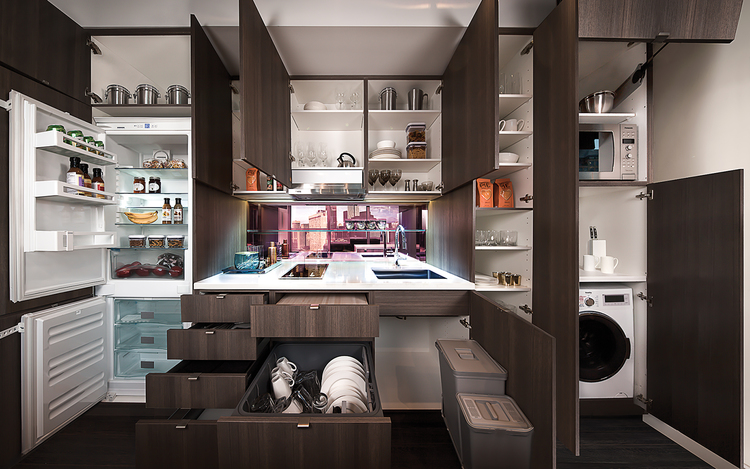
Smart House Toronto’s kitchens come replete with a drawer-size dishwasher. How much space do we actually need to live comfortably in a city? Photo: ©Smart House Toronto
If time is the greatest luxury, the second greatest is space. There are many reasons for this, most obviously the world’s population, which continues to rise at a rate of 1.84% annually. There is also the human urge to live together, challenging cites to build upward and make the most of what limited outdoor space they have. While many of us enjoy the amenities and benefits that come with habitation in close proximity, cities must continually find ways to ensure our coexistence remains harmonious with as little potential for conflict as possible.
Room for all
To keep pace with demographic shifts, building typologies are undergoing a rethink. For instance, what started in the world of work as shared offices is now being applied to residential forms, with co-living offering flexible and economic alternatives that better suit nomadic lifestyles. Considering that life takes place in so many constellations that change constantly, it’s a logical next step for interiors to scale-down while maximizing flexibility and modularity. Apartments of the future should and can be designed to transform themselves, becoming smaller or bigger as necessary. Furnishings, too, are poised to address changing needs. For instance, does every apartment need its own kitchen? Can kitchens be shared, as is now trending within the hospitality sector? And why not design a dining table that doubles as a home-office desk? The Coronavirus pandemic has only sped up questions like these to better determine what is essential for us to live comfortably and well.
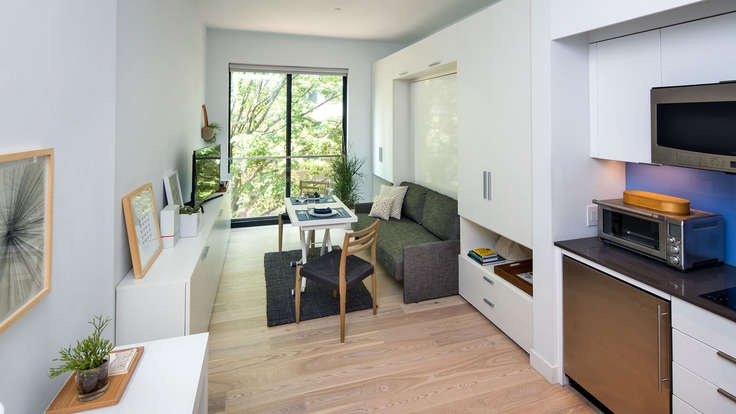
At Carmel Place, a micro-unit building in Manhattan designed by NArchitects, built-ins allow for the living room area to be converted into a bedroom. Photo: ©NArchitects
Time for microcosms
Imagination is required. In 2012, German architect Van Bo Le-Mentzel presented a series of prototypes of a 6.4-square-metre “apartment,” to offer the public a glimpse at how little space is actually needed to accommodate various activities, including cooking, sleeping, bathing and working (admittedly: the room height was 3.6 metres, but he made his point).
Micro-living has since become a larger piece of the urbanscape, with architects recognizing its potential for addressing economic and societal challenges. NArchitects’s nine-storey apartment building in New York called Camel Place was built out of cost-effective shipping containers. Each of its 55 units is priced below market rate and offer streamline interiors that maximize on natural light and leave the impression they are larger than their actual footprints of just 23 to 34 square metres.
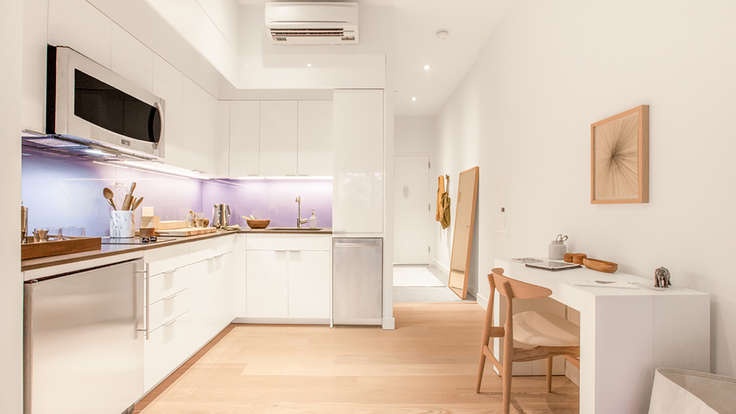
Streamlined interiors that maximize functionality leave the impression the units at Carmel Place are larger than they actually are. Photo: ©NArchitects
Toronto’s Smart House on trendy Queen Street West compares its micro-size interiors, designed by II BY IV, to living versions of the Swiss army knife. The micro-units feature murphy beds that reshape into sofas, and all-in-one kitchens equipped with drawer-size dishwashers. Let’s not forget, though, these projects are also reminders that affordability in cities like Toronto, New York and Berlin is an ongoing challenge.

Red-hued balconies define the exterior of Smart House, a micro-apartment building in Toronto that trades space for a central location in the heart of the city. Photo: ©Smart House Toronto
Having more in common
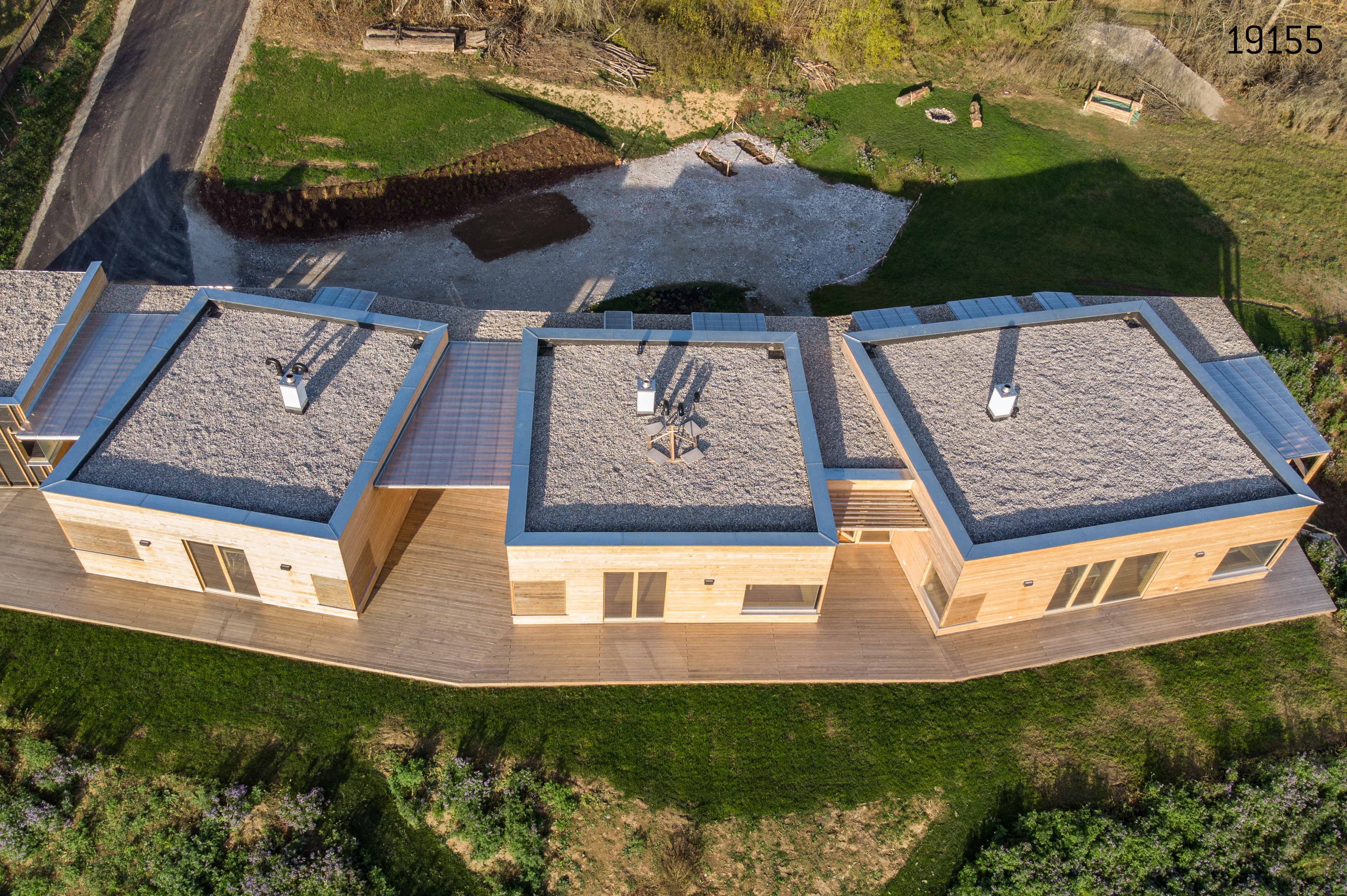
The Co-Sharing House in timber construction by Andreas Breuss shows how the house in the countryside can be a resource-saving living model for the future. Photo: Daniel Pabst, © Andreas Breuss
A different understanding of space is being demonstrated by German architect Andreas Breuss, who is also pursuing a socially relevant concept with his Co-Sharing House. Three houses share the same infrastructure, the same outdoor spaces, and the same garden for harvesting. Breuss’s project is a sign that the single-family home is becoming the exception rather than rule. What stands out most, though, is his solution to the challenge that standard condominium developments have yet to successfully overcome: the human desire to be close to nature with access to private green spaces.
.jpg)
German designer Nils Holger Moormann builds his own furniture and knows how to make the most out of a small room. Photo: Julia Rotter © Nils Holger Moormann
Walls out, living in
While architects work out various kinds of future-oriented concepts, one thing that shouldn’t be overlooked is individuality. It is a balancing act to create living spaces for many whilst also making room for personalities to flourish. Hidden storage and multi-purpose built-ins only go so far. Our own creativity is required to take advantage of a room’s height, for instance, and turn it into a gallery for sleeping or working. We should all be using a new lens for how to best utilize space, and to consider what can be hung, pulled, pushed, folded or rotated. It’s that kind of paradigm shift in thinking that will change the perspective on small spaces, from downsizing to a new kind of upgrade.
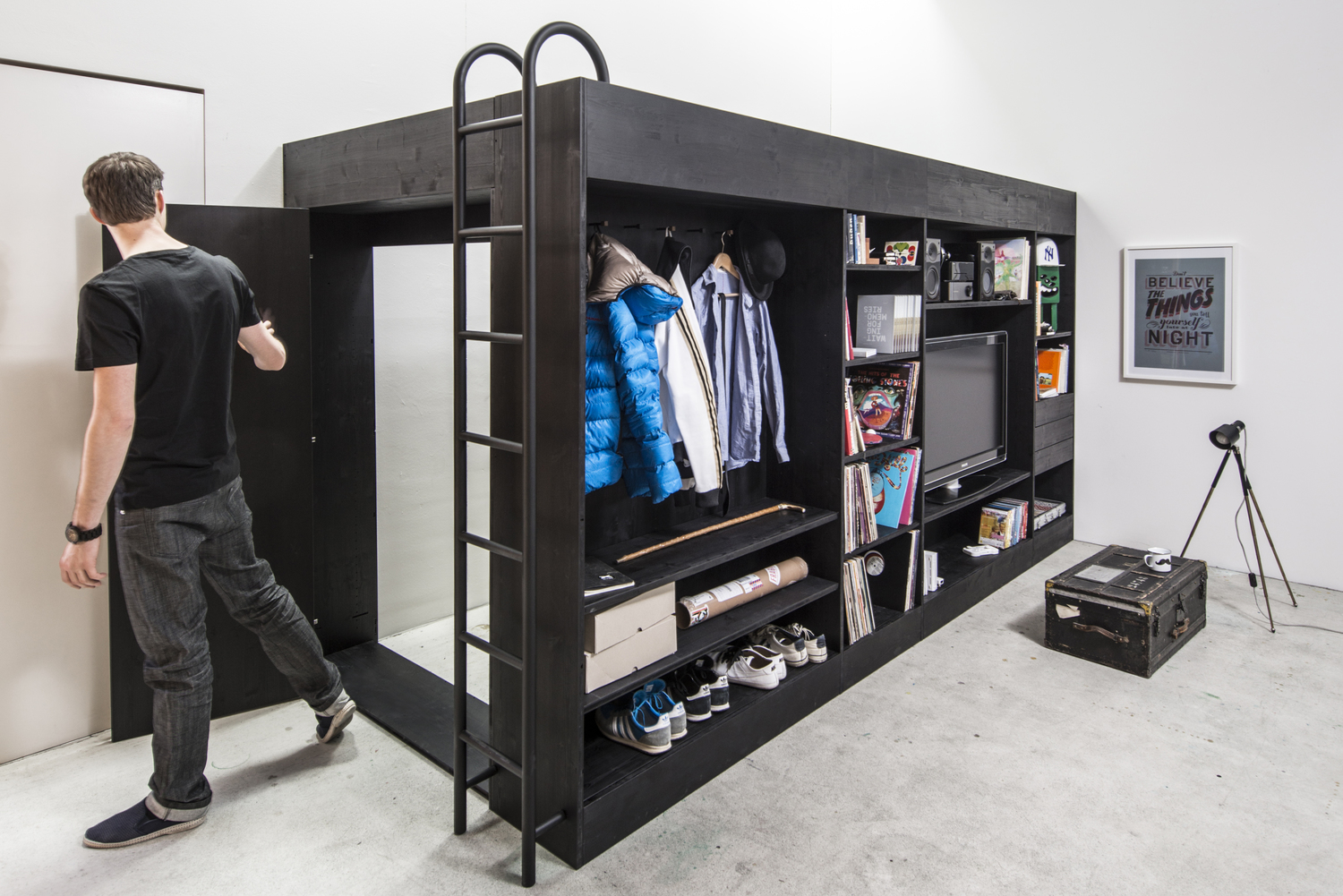
Space is always relative: With the Living Cube – a room within the room – Till Könneker shows what can fit into a few square metres. Photo: ©Till Könneker
Based on an article by Barbara-Jahn Rösel originally published for the German ARCHITECT@WORK newsletter